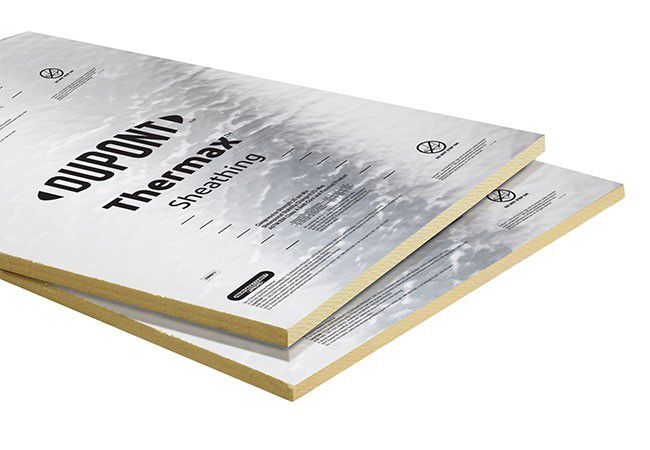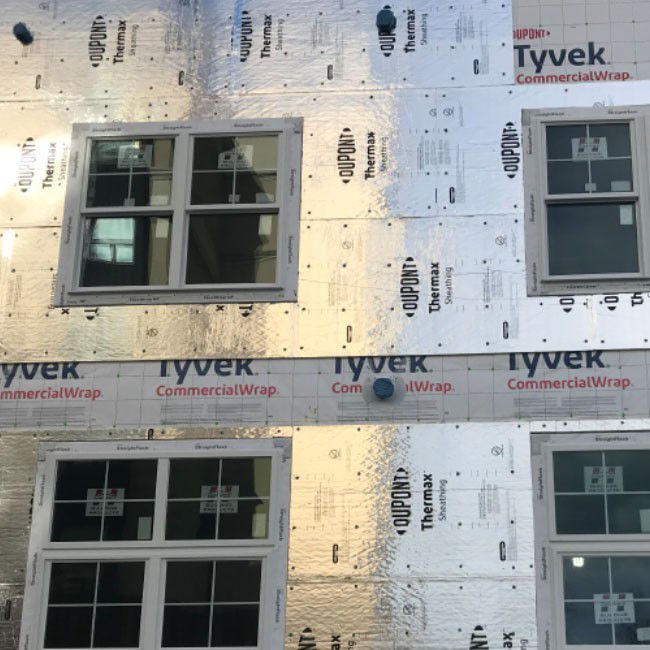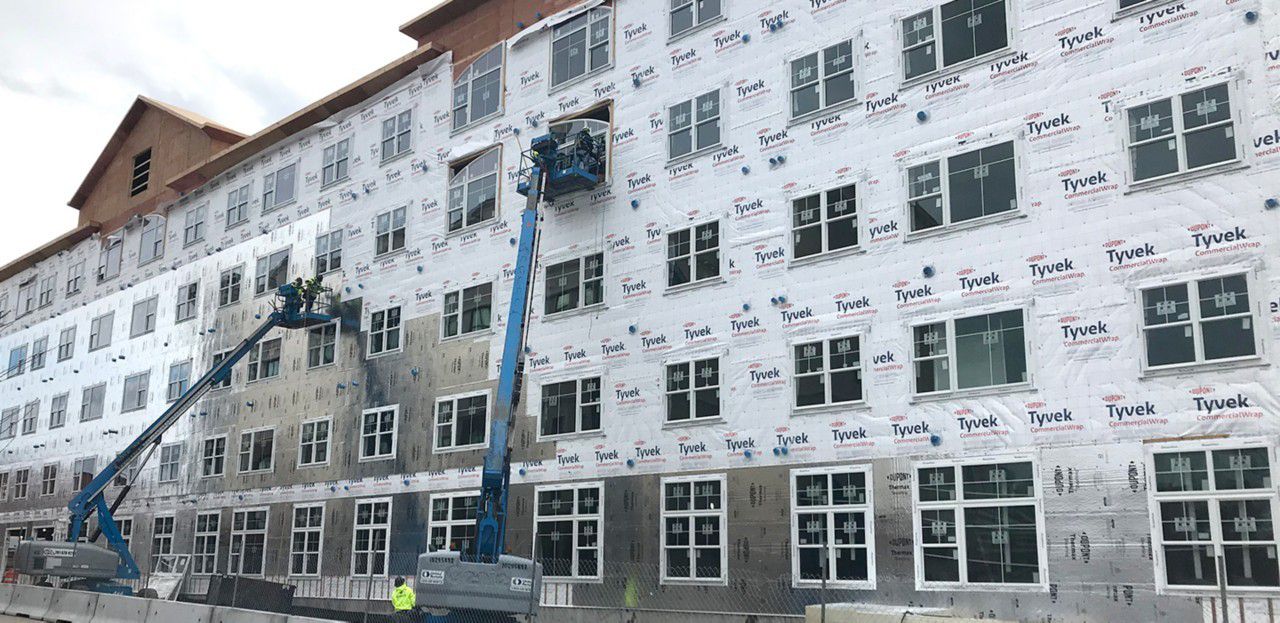DuPont™ Thermax™ Sheathing Insulation
Nonstructural, Glass-Fiber-Infused Rigid Polyiso Insulation



DuPont™ Thermax™ Sheathing Insulation
Nonstructural, Glass-Fiber-Infused Rigid Polyiso Insulation
Features & Benefits
Specifications
Standard Sizes
| Thickness | Width | Length | R-Value | Edge Treatment |
|---|---|---|---|---|
| 0.75 in. | 4 ft. | 8 ft. | 5.3 | Square Edge |
| 3.0 in. | 4 ft. | 8 ft. | 19.0 | Square Edge, Shiplap |
Note: Please be advised that additional sizes may be available. Availability of all sizes varies by region and is subject to change. For further information, please contact your local DuPont Sales Representative or call us at 1-866-338-7668.
Testing
<b>Thermax™ Sheathing Insulation</b> exhibits the properties and characteristics indicated in the table below when tested as represented. Review all instructions and (Material) Safety Data Sheet ((M)SDS) before use. Please contact DuPont at 1-833-338-7668 when additional guidance is required for writing specifications that include this product.
| TEST METHOD | TEST TITLE | PROPERTY | RESULTS |
|---|---|---|---|
| FIRE | |||
| CAN/ULC-S102.2 | Standard Method of Test for Surface Burning Characteristics of Flooring, Floor Coverings, and Miscellaneous Materials and Assemblies | Surface Burning Characteristics1 | Flame Spread ≤ 25 Smoke Developed ≤ 450 Core and Finished Product |
| THERMAL | |||
| CAN/ULC-S770 | Standard Test Method for Determination of Long-Term Thermal Resistance of Closed-Cell Thermal Insulating Foams | Long Term Thermal Resistance | 1.85 m2* °C/W at 50 mm, min. |
| ASTM D2126 | Standard Test Method for Response of Rigid Cellular Plastics to Thermal and Humid Aging | Dimensional Stability | 0.3% (Length & Width) |
| STRENGTH | |||
| ASTM D1621 | Standard Test Method for Compressive Properties of Rigid Cellular Plastics | Compressive Strength2 | 190 kPa, min. |
| ASTM C203 | Standard Test Methods for Breaking Load and Flexural Properties of Block-Type Thermal Insulation | Flexural Strength | 500 kPa, min. |
| ASTM D1623 | Standard Test Method for Tensile and Tensile Adhesion Properties of Rigid Cellular Plastics | Tensile Strength | 35 kPa, min. |
| AIR | |||
| ASTM E2178 | Standard Test Method for Determining Air Leakage Rate and Calculation of Air Permeance of Building Materials | Rate of Leakage | <0.001 L/s*m2, max |
| ASTM E2357 | Standard Test Method for Determining Air Leakage Rate of Air Barrier Assemblies | Air Leakage | No Leakage |
| ASTM E283 | Standard Test Method for Determining Rate of Air Leakage Through Exterior Windows, Skylights, Curtain Walls, and Doors Under Specified Pressure Differences Across the Specimen | Rate of Leakage | <0.02 L/s*m2, max |
| WATER | |||
| ASTM E96 | Standard Test Methods for Gravimetric Determination of Water Vapor Transmission Rate of Materials | Water Vapor Permeance. | <1 ng/Pa-s-m2 |
| ASTM D2842 | D2842-Test Method for Water Absorption of Rigid Cellular Plastics | Water Absorption | 0.1% volume, max. |
1Calculated flammability values for this or any other material are not intended to represent hazards that may be present under actual fire conditions.
2Vertical compressive strength is measured at 10 percent deformation or at yield, whichever occurs first. Since Styrofoam™ Brand Extruded Polystyrene Foam Insulations are visco-elastic materials, adequate design safety factors should be used to prevent long-term creep and fatigue deformation.
Code Compliance
<b>Thermax™ Sheathing Insulation</b> complies with the following codes:
| Code | Description |
|---|---|
| CAN Code Reports | CCMC listing 08433-L |
| CAN Product Listings & Verifications | CAN/ULC-S704 - Type 3, Class 1<br>Thermax™ products are covered under Underwriters Laboratories Inc. (UL) File R5622 <br>CAN/ULC-S102<br>CAN/ULC-126 - Fire Test of Roof Deck Constructions Nos. 99, 120 and, 123<br>FM 4880 - Wall Construction Metal-Faced – Class 1 Fire Rated to Max. 30’ Exposure High, 3” Thick, 4’ Wide, When Installed as Described in the Current Edition of FMRC Approval Guide. Contact Dupont Technical Support for most current FM 4880 attachment requirements. |

